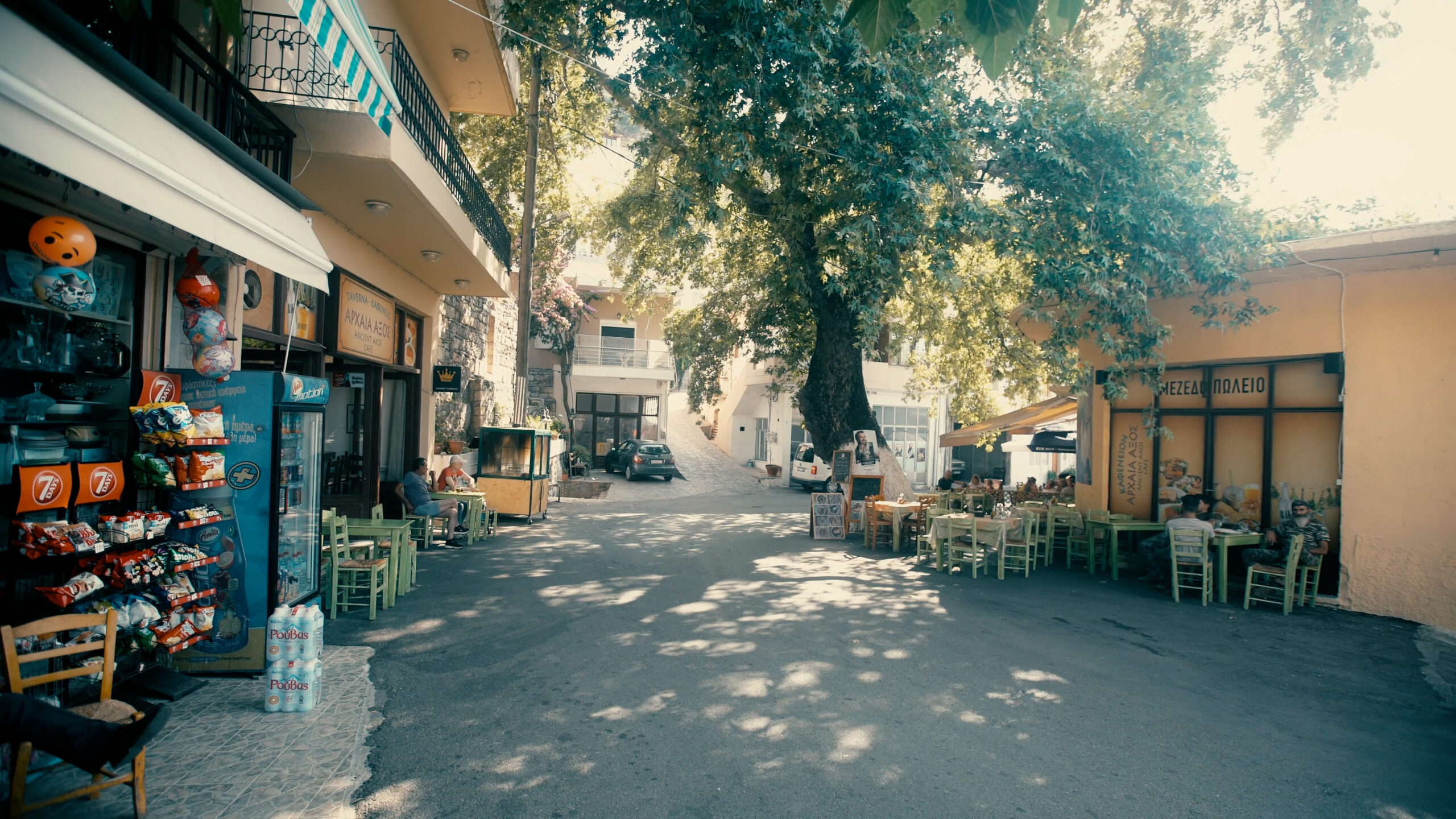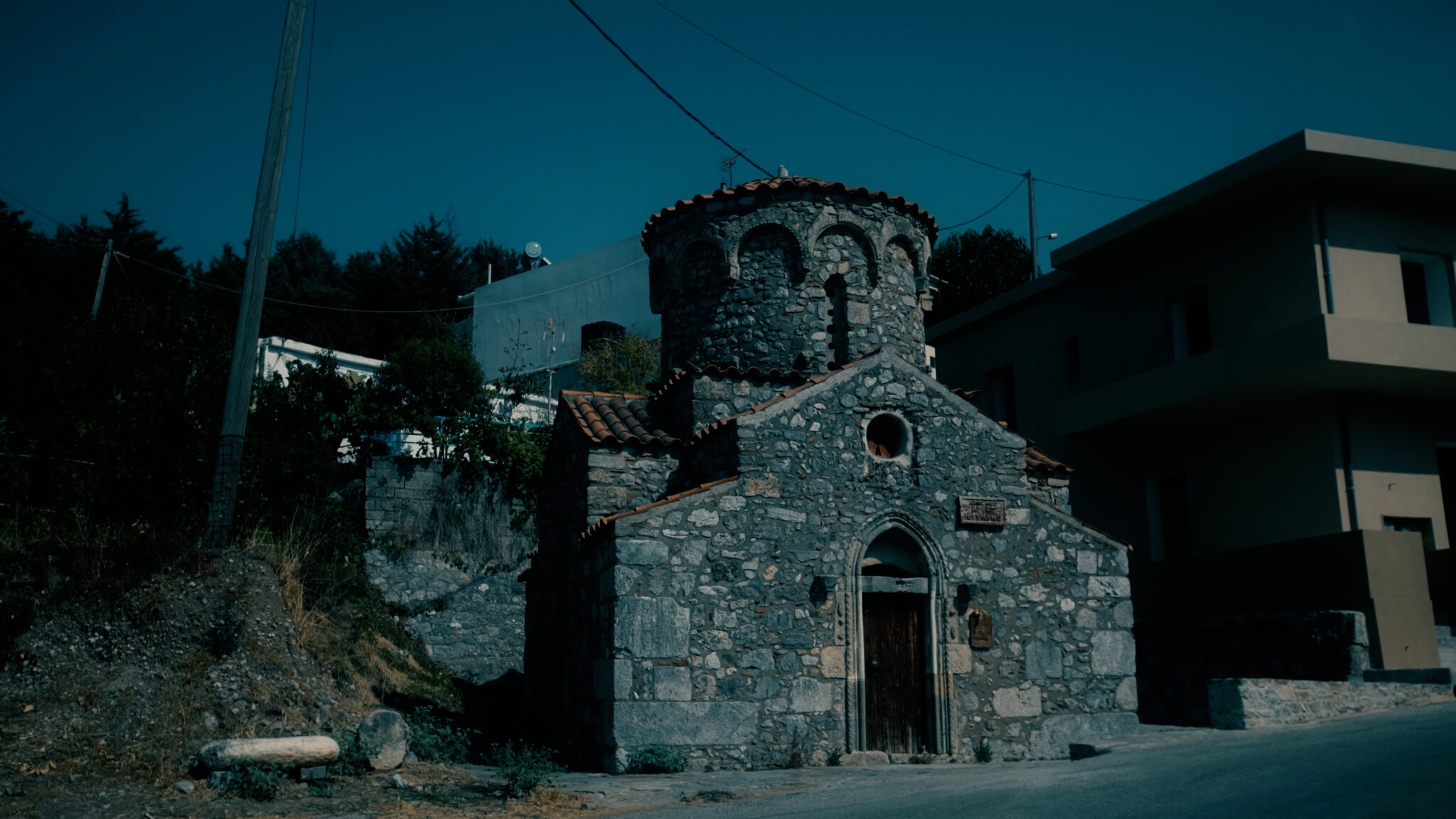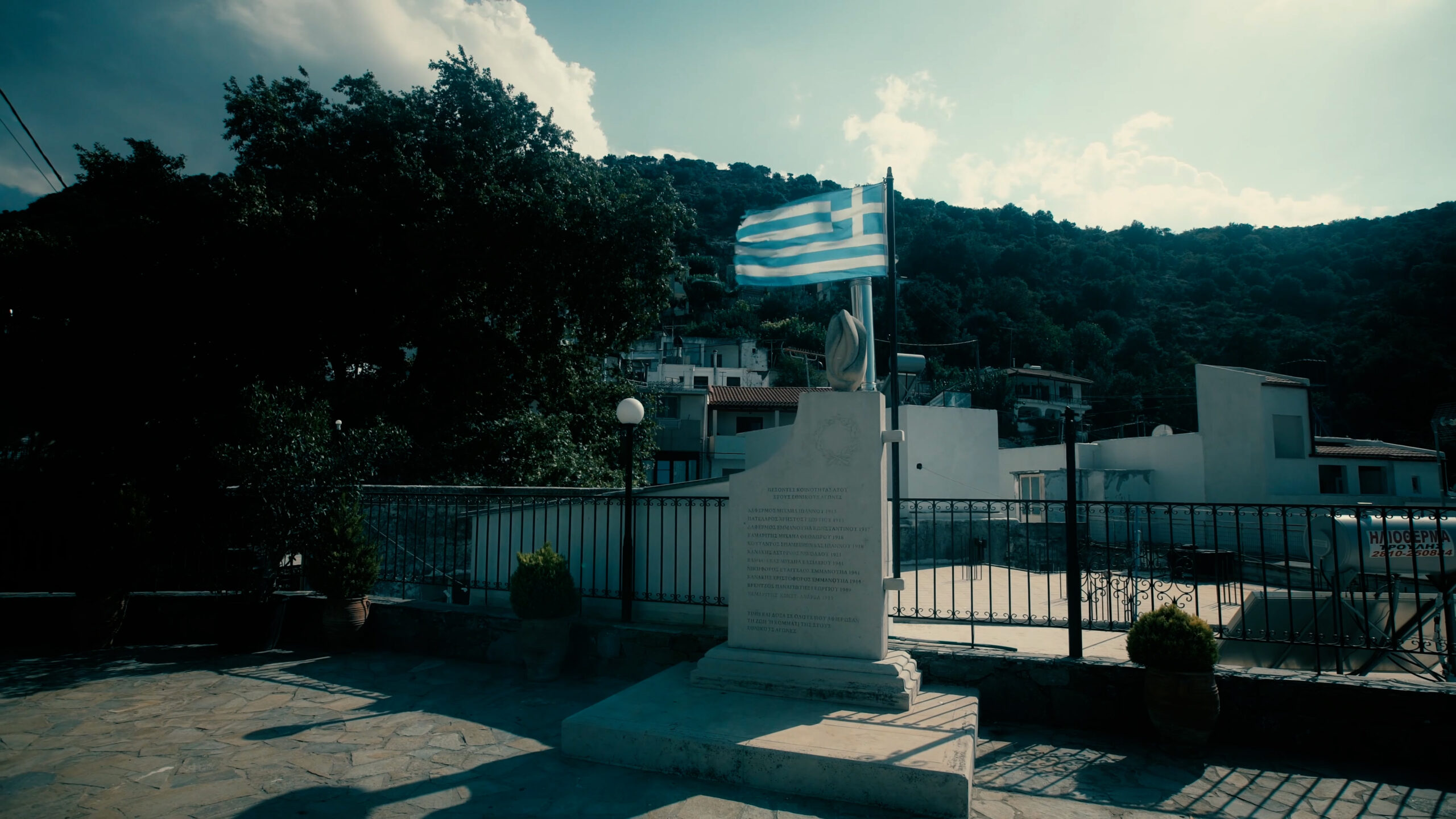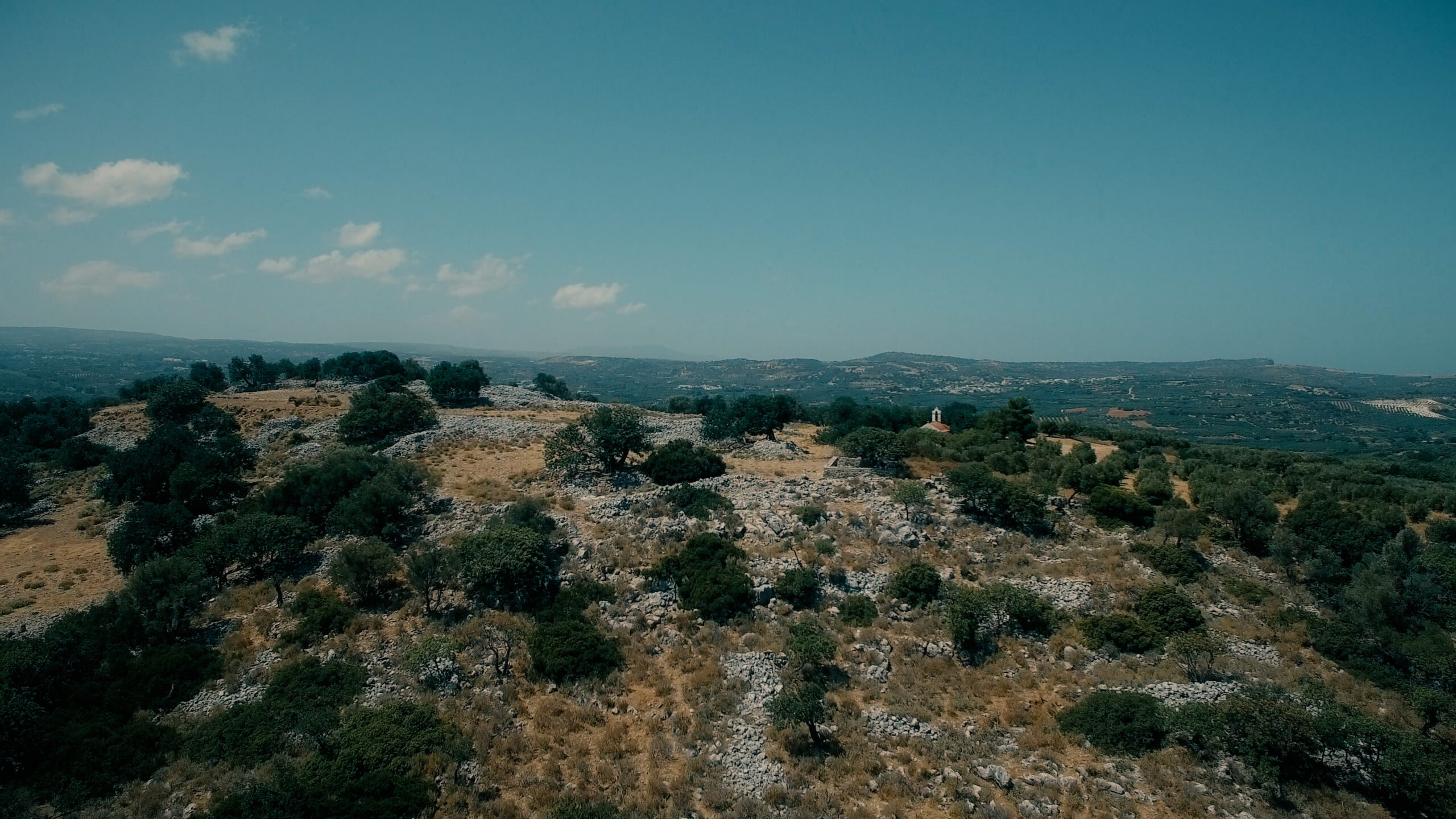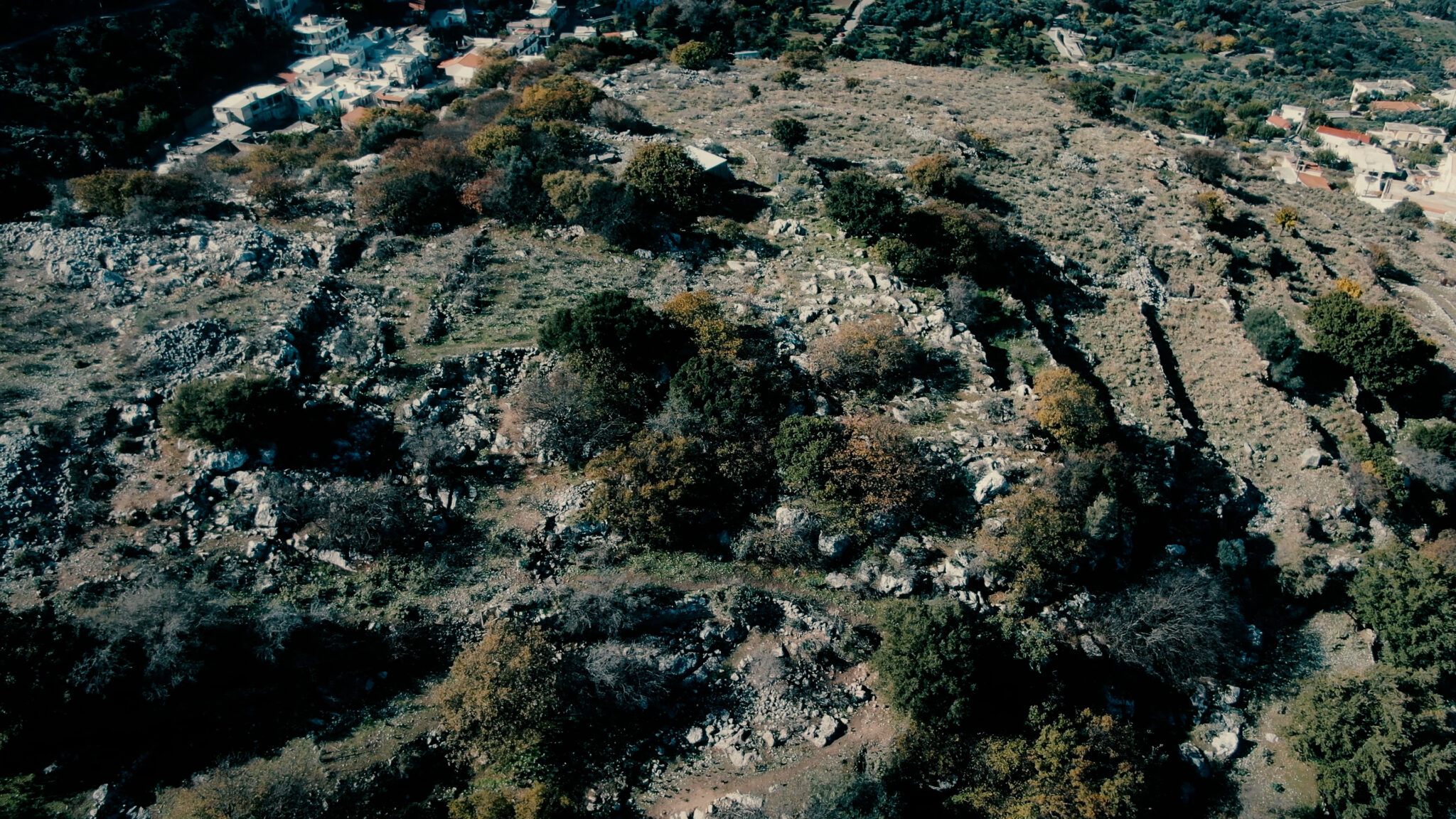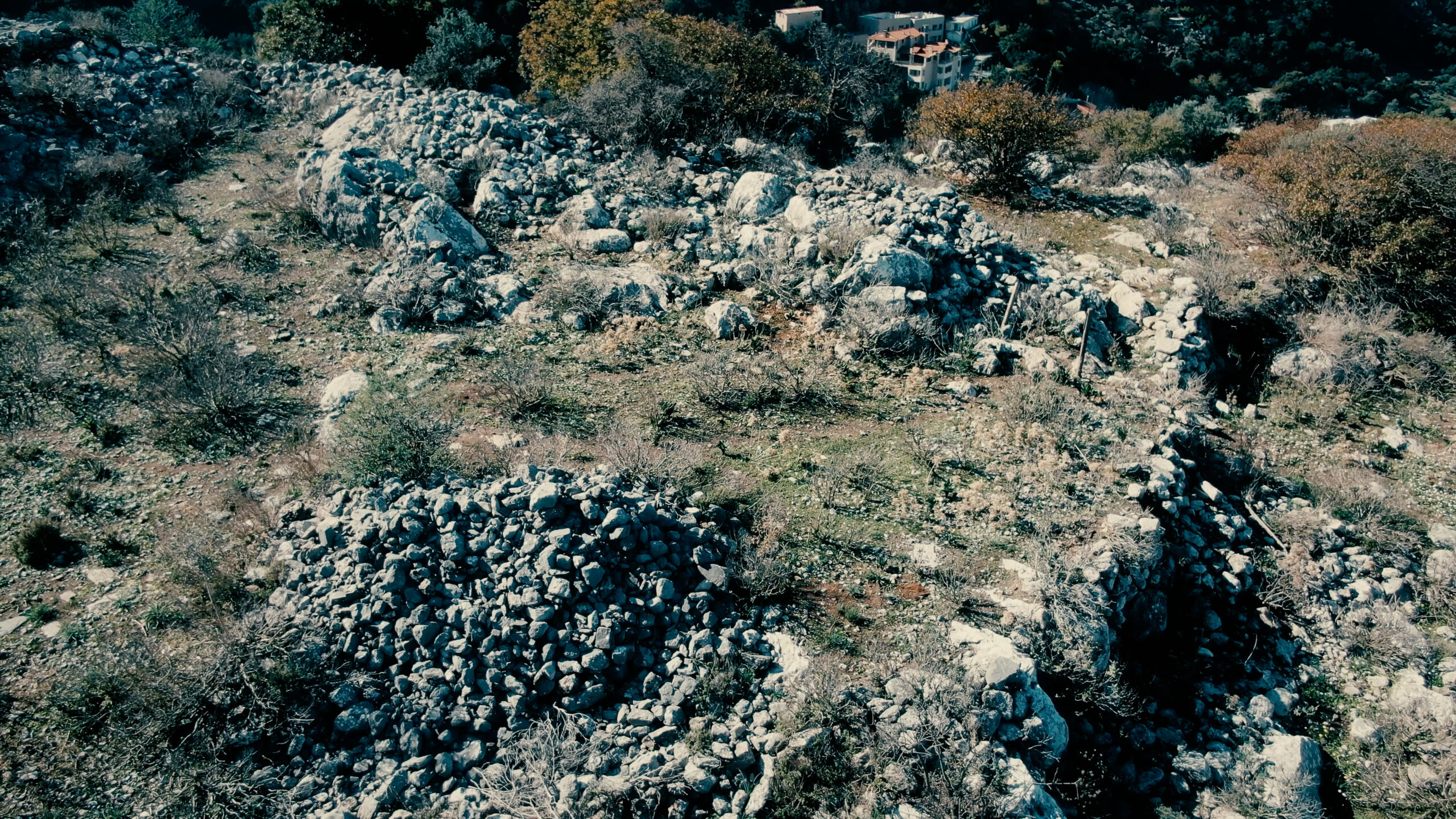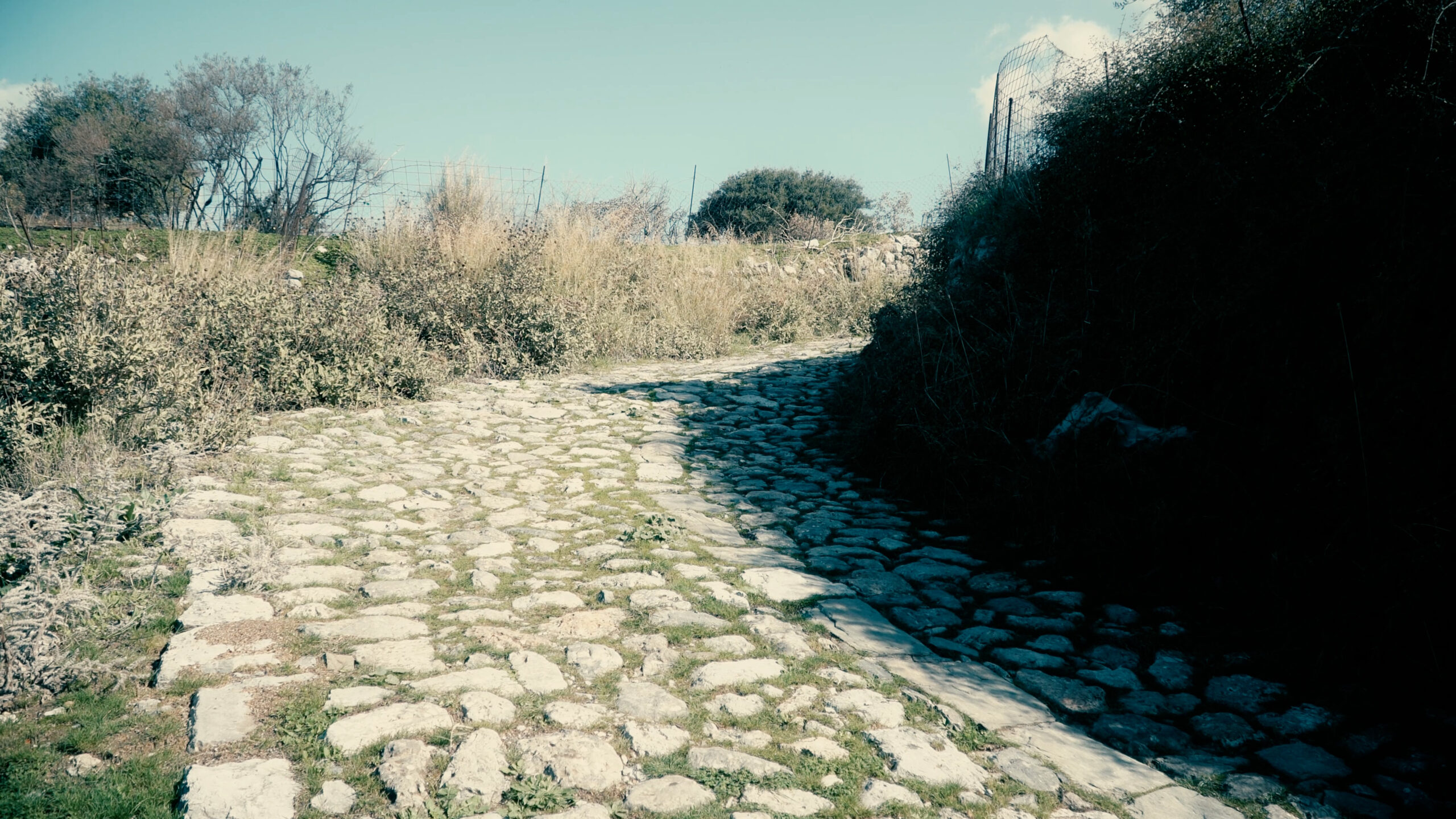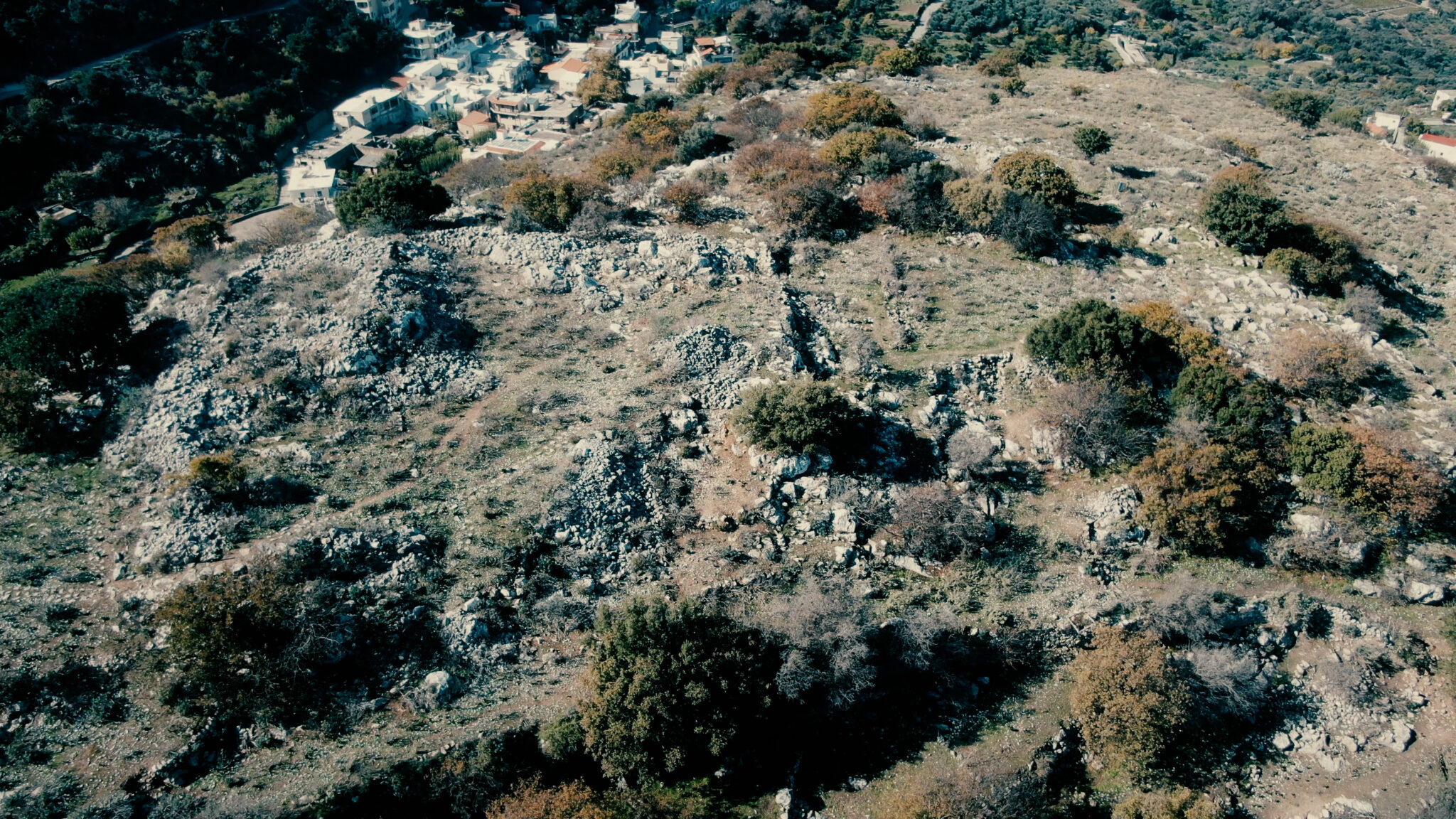At the foot of Psiloritis, on the Vunos hill, in the current settlement of Axos, the architectural remains of the homonymous ancient city of Oaxos or Axos can be found. According to tradition, it was founded by the hero Oxos, son of Apollo and the nymph Akakallida. The position is naturally a fortress and dominates the area. Its citadel was at the top of the hill, while later it can be seen how it was extended to its northern side. The first evidence of habitation in the area dates back to the Late Neolithic – Early Minoan Period (end of the 4th – beginning of the 3rd millennium BC). The city flourished during the Archaic period (7th – 6th century), while Herodotus mentions that Wattos, grandson of the king of Axus Etearchos, participated in the founding of Kyrenia (631 BC). In the 4th c. BC, the city minted silver coins and during the Hellenistic period it was the seat of the Cretan Council. After the Roman conquest (67 BC), it continued to be one of the most important cities in Crete. According to the sources, Axos during the first Byzantine period was the seat of a bishopric.
The settlement of Axos continued to flourish during the Venetian period, as can be seen from the large number of surviving temples, seven of which are located in the core of the settlement. Early Christian marble parts of architectural members are preserved in several temples. One of the most important building remains is the temple of Aphrodite or Zeus, another temple and the Rectory. The remains of the wall that protected the city are visible, while the remains of an aqueduct are also preserved.
At the Panagia site, the architectural remains of houses from the Late Hellenistic period (150-67 BC) were discovered. On the NW slopes of the hill, at the site of Gypa and Kato Gypa, many figurines from the Archaic period were found. To the west of the settlement, in the Gerakaro position, a shrine depository has been excavated, which contained figurines of female figures dating to the Classical and Hellenistic periods. An important find is the clay female head from the beginning of the 6th century. B.C. At the location of Teichio or Megalos Trafos, at the foot of the hill, an extensive cemetery has been uncovered that shows how it was used from the Archaic to the Roman period. The earliest burial in the cemetery dates back to the Protogeometric period (10th century BC).
In the location Hellinospita or Gorgoraftis or Muri or Buri, underground chamber tombs of the Roman period have been identified.
